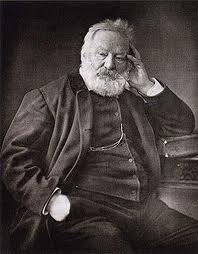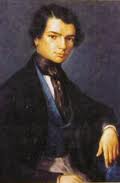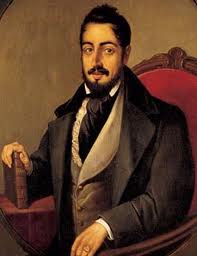Romanticism prose
The Spanish Romantic prose genre actually spans several genres: historic novels, costumbrist vignettes and journalism. Spanish narrative during this period was quite scarce because most of the material was translated from the great English and French authors, and the Spanish production was merely an imitation of these works. Journalism, with Mariano José de Larra, has a key role in the spread of the Romantic ideals in Spain.
Prose of the Spanish Romanticism

During Romanticism there was a desire for fiction literature, especially novels, because people wanted to read about adventures and mysteries. However, the Spanish production of Spanish Romantic prose is quite scarce, and most of the available works were translations of the works of English, German and French authors. There were over 1000 translations before 1850, mostly the works of Dumas, Chateaubriand, Walter Scott and Victor Hugo. The Spanish prose during this time was limited to some novels, journalism, scientific essays and costumbrist works. There were four main types of novels during the first quarter of the 19th century: educational, sentimental, terror and anticlerical.
Historic novel
The historic novel in the school of Spanish Romantic prose is developed by imitation of the works of the Scottish writer, Walter Scott. It follows two tendencies: liberal and moderate. The first covers anticlerical and folkloric topics, while the latter covers more traditional topics like the exaltation of traditional and religious ideals.

The main authors of the historic novel are:
- Enrique Gil y Carrasco: lawyer and diplomat, author of "El Señor de Bembribe", the best historic novel to be influenced by the works of walter Scott.
- Antonio Trueba: he wrote legends and short stories set in Castile or the Basque Country. His best work is "Paloma y Halcones".
- Francisco Navarro Villoslada: his works are mostly written at the end of the Romanticism period and at the beginning of the Realism period, and are normally set in the Middle Ages. His best work is "Amaya".
Costumbrist Vignettes
Costumbrist literature develops in Spain from 1820 to 1870. The main works deriving from it are the Costumbrist vignettes, which are short texts in prose which describe, with a lot of attention to detail and sometimes in a satiric tone, typical scenes of the Spanish way of life. Costumbrist vignettes don't have a dramatic development or a plot: they are an immobile description of reality, and reading one is like you are undergoing a Spanish immersion in Spain.
Costumbrist as a movement of Spanish Romantic prose appears because of the Romantic wish of exalting anything that's different or peculiar in some way. Costumbrist vignettes were so popular in Spain that they even affected the development of the novel genre. The two main authors of the Spanish costumbrist movement were Mesonero Romanos and Serafín Estébanez Calderón.
Journalism
Journalism plays a vital role for both the culture of Spain as well as the Spanish Romantic prose of the 19th century. It was during this time that it was born as a literary genre. It worked as a way of introducing the Revolutionary ideals in Spain, and it also helped to spread them throughout the country. Journalism was a weapon for political struggle, and it was written in a clear, concise language that anyone could understand. On the literary front, journalism helped to introduce the works of Byron and Scott to the country.

After the death of Ferdinand VII in 1833, journalism goes through many important changes. The return of those who were exiled during the absolutist period signifies the arrival of new ideas, because those who'd been in exile had lived in much more developed countries like France and England. In 1836, the French writer Girardin revolutionizes journalism by creating a new genre: serialized novels. Spain was quick to copy the trend, although in Spain they became more popular between 1845 and 1855, near the end of the Romanticist period.
The main journalist during the Romanticist period was Mariano José de Larra, born in Madrid. He wrote both political and costumbrist articles, as well as literary critics of the romantic works his contemporaries wrote. Despite being involved in journalism, Mariano José de Larra is still considered to be one of the key players of Spanish Romanticism.

